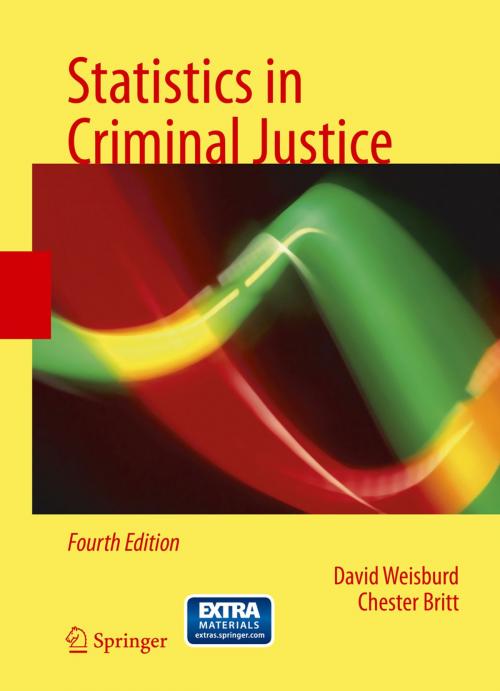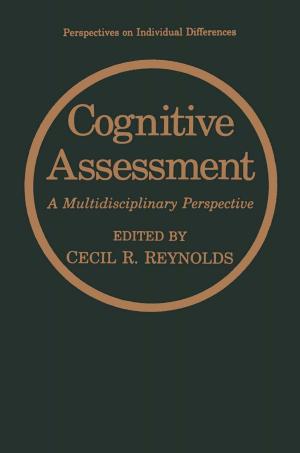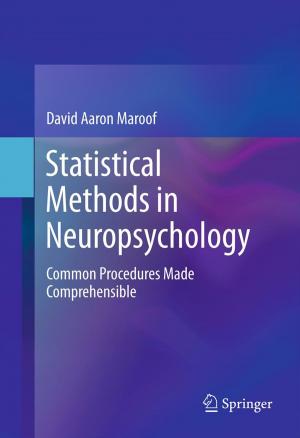Statistics in Criminal Justice
Nonfiction, Social & Cultural Studies, Social Science, Crimes & Criminals, Criminology| Author: | David Weisburd, Chester Britt | ISBN: | 9781461491705 |
| Publisher: | Springer US | Publication: | December 11, 2013 |
| Imprint: | Springer | Language: | English |
| Author: | David Weisburd, Chester Britt |
| ISBN: | 9781461491705 |
| Publisher: | Springer US |
| Publication: | December 11, 2013 |
| Imprint: | Springer |
| Language: | English |
Statistics in Criminal Justice takes an approach that emphasizes the application and interpretation of statistics in research in crime and justice. This text is meant for both students and researchers who want to gain a basic understanding of common statistical methods used in this field. In general, the text relies on a building-block approach, meaning that each chapter helps to prepare the student for the chapters that follow. It also means that the level of sophistication of the text increases as the text progresses. Throughout the text there is an emphasis on comprehension and interpretation, rather than computation. However, as the statistical methods discussed become more complex and demanding to compute, there is increasing use and integration of statistical software. This approach is meant to provide the reader with an accessible, yet sophisticated understanding of statistics that can be used to examine real-life criminal justice problems with popular statistical software programs. The primary goal of the text is to give students and researchers a basic understanding of statistical concepts and methods that will leave them with the confidence and the tools for tackling more complex problems on their own.
New to the 4th Edition
· New chapter on experimental design and the analysis of experimental data.
· New chapter on multi-level models, including growth-curve models.
· New computer exercises throughout the text to illustrate the use of both SPSS and Stata.
· Revision of exercises at the end of each chapter that places greater emphasis on using statistical software.
· Additional resources on the text’s web site for instructors and students, including answers to selected problems, syntax for replicating text examples in SPSS and Stata, and other materials that can be used to supplement the use of the text.
Statistics in Criminal Justice takes an approach that emphasizes the application and interpretation of statistics in research in crime and justice. This text is meant for both students and researchers who want to gain a basic understanding of common statistical methods used in this field. In general, the text relies on a building-block approach, meaning that each chapter helps to prepare the student for the chapters that follow. It also means that the level of sophistication of the text increases as the text progresses. Throughout the text there is an emphasis on comprehension and interpretation, rather than computation. However, as the statistical methods discussed become more complex and demanding to compute, there is increasing use and integration of statistical software. This approach is meant to provide the reader with an accessible, yet sophisticated understanding of statistics that can be used to examine real-life criminal justice problems with popular statistical software programs. The primary goal of the text is to give students and researchers a basic understanding of statistical concepts and methods that will leave them with the confidence and the tools for tackling more complex problems on their own.
New to the 4th Edition
· New chapter on experimental design and the analysis of experimental data.
· New chapter on multi-level models, including growth-curve models.
· New computer exercises throughout the text to illustrate the use of both SPSS and Stata.
· Revision of exercises at the end of each chapter that places greater emphasis on using statistical software.
· Additional resources on the text’s web site for instructors and students, including answers to selected problems, syntax for replicating text examples in SPSS and Stata, and other materials that can be used to supplement the use of the text.















